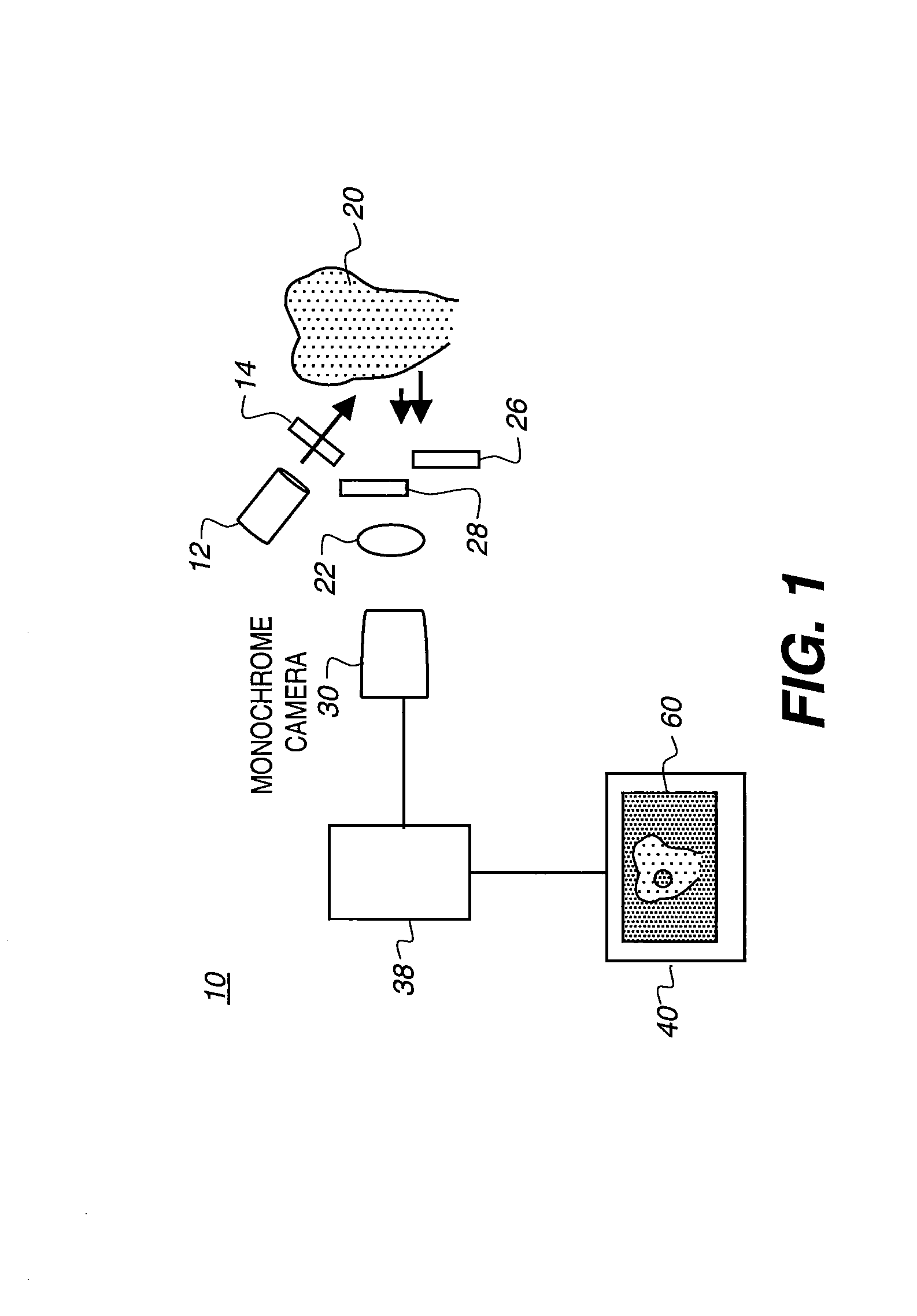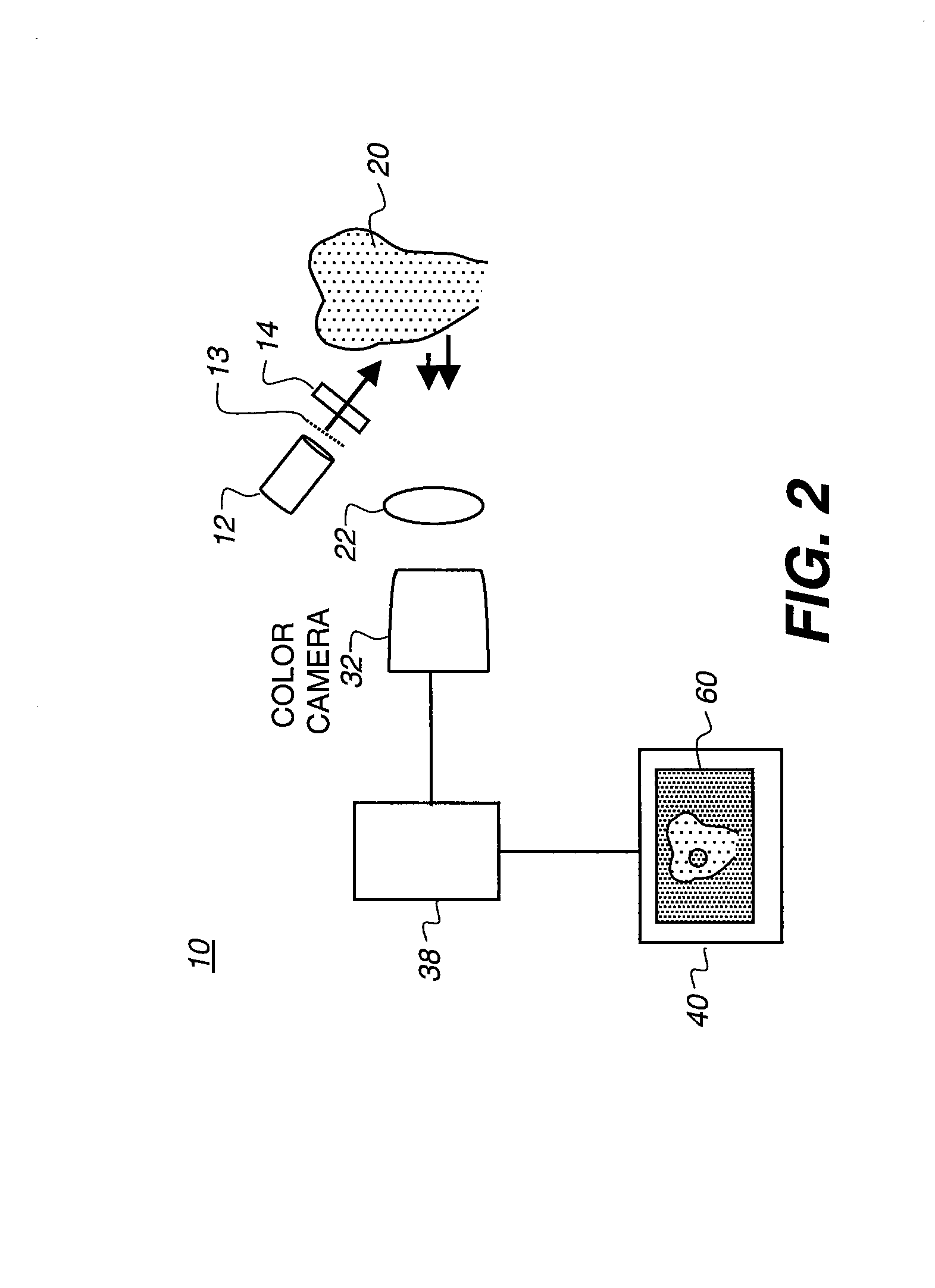Method for detection of caries
a caries and caries technology, applied in the field of dental imaging, can solve the problems of permanent tooth damage and even tooth loss, exposure to x-ray radiation, risk of damage to weakened teeth, and spreading infection by tactile methods
- Summary
- Abstract
- Description
- Claims
- Application Information
AI Technical Summary
Benefits of technology
Problems solved by technology
Method used
Image
Examples
second embodiment
[0077]Results from asymmetric illuminance imaging show improvement over the scalar multiplication method of Equation (1). FIG. 9 shows two example FIRE images generated from the same tooth. At the left is an image 70 obtained using the scalar multiplication method. Image structure is noticeably darker, especially in the edge features. Also, carious lesions 86a and 86b are overly darkened, failing to show the distinctive stages of caries development between the two lesions. Image 72 on the right, taken using asymmetric illuminance imaging described with respect to this second embodiment, shows marked improvement in dynamic range and contrast and improved edge definition.
[0078]Another alternative embodiment for combining fluorescence and reflectance images takes a different approach from the scalar multiplication or asymmetric illuminance imaging approaches just described. This “downshifting” or “offset” approach does not risk distortion of the image data, such as can result from scal...
third embodiment
[0087]The downshifting imaging method shows pronounced improvement over the multiplicative scaling method for combining fluorescence and reflectance image data. FIG. 11 shows two example FIRE images generated from the same tooth using the same illumination level. At the left is an image 70 obtained using the scalar multiplication method. Image 80 on the right, provided using downshifting imaging with an offset, described with respect to this third embodiment, shows marked improvement in dynamic range and contrast and improved edge definition. With the downshifting imaging method, the amount of contrast (i.e., intensity difference) between the carious lesions 86a and 86b and the surrounding sound structures can be adjusted by adjusting the offset value used.
[0088]It must be observed that portions of the three different embodiments described for combining fluorescence and reflectance data can themselves be combined to obtain a FIRE image. For example, drive current to light source 12 ...
PUM
 Login to View More
Login to View More Abstract
Description
Claims
Application Information
 Login to View More
Login to View More - R&D
- Intellectual Property
- Life Sciences
- Materials
- Tech Scout
- Unparalleled Data Quality
- Higher Quality Content
- 60% Fewer Hallucinations
Browse by: Latest US Patents, China's latest patents, Technical Efficacy Thesaurus, Application Domain, Technology Topic, Popular Technical Reports.
© 2025 PatSnap. All rights reserved.Legal|Privacy policy|Modern Slavery Act Transparency Statement|Sitemap|About US| Contact US: help@patsnap.com



